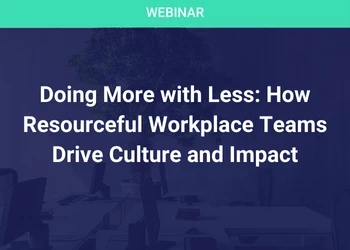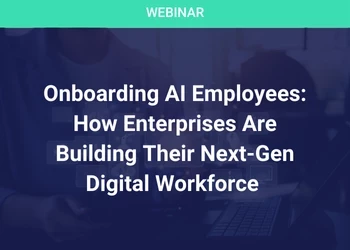
The majority of all startup firms fail for one very specific reason – and it’s NOT why you think.
It’s not their product. It’s not the service or technology. It’s not even marketplace developments. It’s because of people.
A well-known statistic states that 65% of all startups fail within their first 10 years. Most of those failures can be traced back to people issues.
The hard reality is most small to mid-size businesses never successfully scale because they don’t establish the connectivity between their employees, their customers, and their partners that is necessary to grow, and grow sustainably. They fail at this critical inflection point because they lack the EQ perspective in their IQ approach.
Connectivity begins with people, not objectives or outputs.
People Not Product
The biggest obstacle constraining mid-sized businesses is people, not product.
Many acclaimed authors such as Noam Wasserman (The Founder’s Dilemmas), Peter Drucker (The Effective Executive), and Jim Collins (Good To Great) have all discussed the importance of this 'people dynamic'. Because how a company’s various teams are deployed, led, and supported ultimately becomes the handicap to revenue expansion for many growing firms.
Younger companies are most susceptible to this danger, because these organizations are usually built on the 'hustle' of youth and contribution of individuals. But as these companies become more established, they often cannot scale to the next level because their people in leadership roles are not necessarily people' people.
Of course, business divisions must be built on functional specificity. Yet building the culture and ethos is paramount, especially in the growth stage. Making matters worse is a myopic focus on objectives - often taking the form of metrics, measurement and a religion of data that leads many companies to focus on the quantitative at the expense of all else. While data can certainly drive efficiency, the real magic of growth stems from the people element. So ultimately, scaling starts with dynamic leadership and vision not bean-counting.
This is coming from a CFO, so I might have some idea of what I’m talking about.
Leveling Up Requires People' People
It doesn’t matter whether yours is a founder-led company or currently directed by venture capital/private equity investors. Your challenge remains the same: to scale the business. Perhaps the clearest illustration of this dilemma comes from fast-growth, technology firms that are rapidly forced to transition from 'Go-to-Market' to 'Go-to-Scale'. Initially, a founding team of strong individual contributors wearing many different hats may well establish a strong product-market fit. But taking a business to scale requires further specialization, not to mention a certain level of experienced supervision. This is the crucial point - because it’s this 'leveling up' phase that can either unlock or inhibit a company’s trajectory.
ALIGNMENT
Scaling anything requires the proper strategy. But this really means operational depth more than operational efficiency. The people inside your organization must be aligned with the mission. Jeff Bezos, Steve Jobs, and Richard Branson are fine examples of CEOs who succeeded in pulling this rabbit out of the hat.
But what if you’re not Jeff, Steve or Richard? What should you do? How do you take your company from $10 million to $100 million in revenue, in this current environment?
GROWTH CONCEPTS
Below are four simple concepts to help your business become one of the small minority of companies who are able to leapfrog the 'level up' stall-out point.
1) Re-imagine the CEO role
Your CEO’s job is no longer chief cook and bottle-washer. Rather, the Chief Executive’s SOLE responsibility is to align your company’s people around the long-term vision. During your 'go-to-scale' phase, the single most important activity of the CEO is selling vision. Everyone needs to be clear on precisely where the business is going. The CEO must always, always be hammering on their vision of WHERE the ship and its crew are headed.
2) Change your criteria for hiring
If you are to make the swing to greatness, you must minimize the common practice of simply hiring trusted friends or close second-degree connections. But neither can you simply choose folks for their experience, intellect, or college transcripts. Instead, your acquisition of talent must now become rooted in the concept of: “Ask something great/Offer something great.” With all your hires, you must now ask for greatness up front. But in return for their commitment, you must deliver on four promises of your own:
- You will reward hard work with the opportunity
- You will take an interest in the employees as individuals
- You will make all employees feel like a member of the family
- You’ll call on each employee to be part of the mission
If you are authentic in these areas, your employees will run through brick walls for you.
3) Make the hard decisions.
'Making the hard decisions' doesn’t mean cutting heads or shutting down divisions. It means honestly assessing where your firm excels and more importantly, where it doesn’t. It means those morning sales meetings where the team shares their weekly wins have to stop. Instead, pivot these into 'tough love' sessions where your client’s negative feedback takes the center stage. Improvement requires an honest appraisal and a sharp eye to call out the naked truth. If your culture doesn’t demand it, you will fail.
4) Make sure you surround yourself with those who subscribe to YES AND
When establishing the leadership team that is going to grow the business you must also make sure it is one that will grow with the business. This means prioritizing “outside-the-box” thinking and collaborative debate above acts of fealty or blind loyalty. It requires promoting an environment of candor…sometimes radical and transparency…sometimes uncomfortable. These are also people who find the silver lining in every cloud. When you ask for the impossible they are more likely to respond with YES AND than they are with NO BUT.
LOOK PAST THE TREES TO SEE THE FOREST
Often, the leaders of organizations may not have the critical eye or the backbone to handle the raw demands of this responsibility. Sometimes they do. Or sometimes they bring in outside help to assist them in this. But if you bring in outside assistance, you must guard against the single most common pitfall in this approach: saddling your 'external eye' with triviality.
The reality is the CEO who is hyper-focused on specific, micro-issues often loses sight of the big picture. Worse, they can hamstring the very people who are able to help them with the needed perspective. As a leader, you stand a much better chance in navigating your ship through the rocks, when you have access to a person or a group of people who’ve traveled the passage numerous times before.
TABLE STAKES
Winning as a team isn’t some philosophical goal on a mission statement and it’s not derived from good OKRs. It truly is the only route to your firm’s success. Ironically, competency and performance are not your end goal. Those are merely table stakes in today’s environment. What really ensures your outcome is the perspective of EQ, people orientation, and firm alignment overlaid onto the operational efficiency your business requires. This must be done under your leadership and carried out by your management team. This is no easy task because there is always an art to successful execution. You cannot outsource the leadership of this and your management team must be unified in the strategic approach. Of course, your employees must also be fully aligned.
These are all EQ/people-skill challenges. They are not reliant on or heavily influenced by data input or output. In the end, you will only succeed in scaling up by ensuring you have the necessary 'soft skills' to guide the 'hard skills'.
This is something the majority of founders and CEOs find challenging. Hopefully, you can learn this on the fly. But if not, then you might consider seeking the help of an experienced guide. Remember, your aim is to be part of the few who succeed in making this difficult transition. Done properly, you’ll jump the revenue and not the shark.
But it all starts with an honest assessment.
So, how are you planning to embark on your next phase of business growth?






















